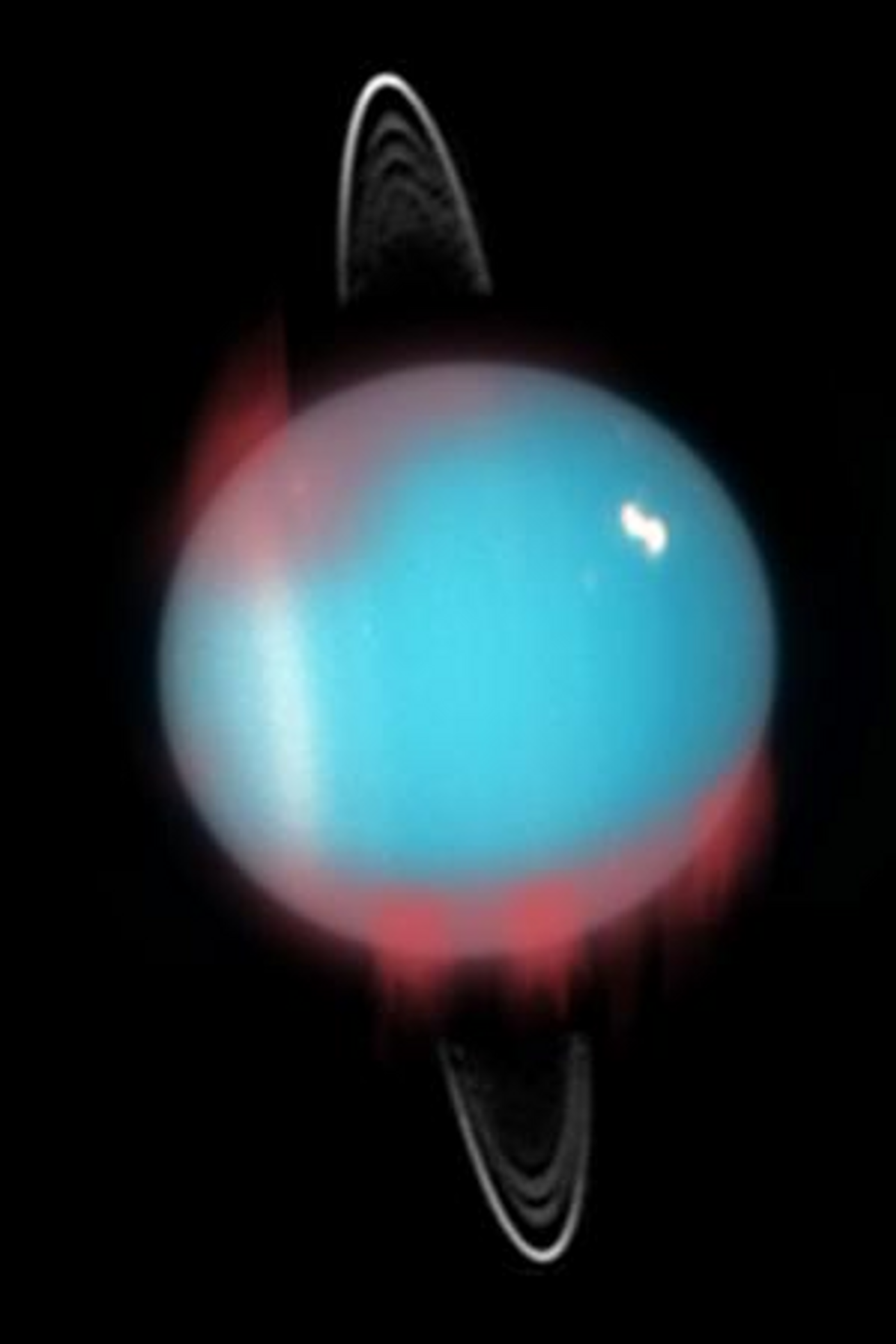Infrared Aurora Confirmed on Uranus: A Breakthrough in Planetary Magnetic Field Studies
A recent study published in Nature Astronomy examines a first-time confirmation of infrared (IR) aurora on the planet Uranus, which is one of the most distant planets in our solar system. This remarkable discovery was conducted by a team of researchers from the United Kingdom and holds the potential to help scientists better understand the magnetic field processes of planets within our solar system but also exoplanets, which could help in identifying if an exoplanet is habitable.
This study first began back in 1992 when astronomers first detected IR aurora on Uranus but the findings weren’t confirmed despite several attempts by astronomers over the years, possibly due to the distance to Uranus and its long orbit. However, astronomers were able to use the Keck II telescope in September 2006 to obtain 216 spectral images. These images have been analyzed with several techniques to confirm that Uranus has IR aurora, which could help gain greater insights into why Uranus rotates on its side along with its higher-than-normal temperatures, especially given its extreme distance from the Sun.
Artist rendition displaying how the Uranus aurora (red) might have appeared in 2006 when this study was conducted. (Credit: NASA, ESA and M. Showalter (SETI Institute) for the background image of Uranus, as was observed by the Hubble Space Telescope (in the visible spectrum) in August 2005)
Additionally, understanding aurora on planets throughout our solar system could also help astronomers better understand the conditions for life to evolve, as the Earth’s magnetic field is responsible for shielding us from the harmful solar radiation. This could be especially prevalent in searching for life on exoplanets, as well.
“A majority of exoplanets discovered so far fall in the sub-Neptune category, and hence are physically similar to Neptune and Uranus in size,” said Emma Thomas, who is a PhD student in the School of Physics and Astronomy at the University of Leicester and lead author of the study. “This may also mean similar magnetic and atmospheric characteristics too. By analyzing Uranus's aurora which directly connects to both the planet's magnetic field and atmosphere, we can make predictions about the atmospheres and magnetic fields of these worlds and hence their suitability for life.”
How will Uranus’ aurora help astronomers better understand Uranus and the potential for life on exoplanets in the coming years and decades? Only time will tell, and this is why we science!
As always, keep doing science & keep looking up!
Sources: Nature Astronomy, NASA, NASA (1), Wikipedia, EurekAlert!









